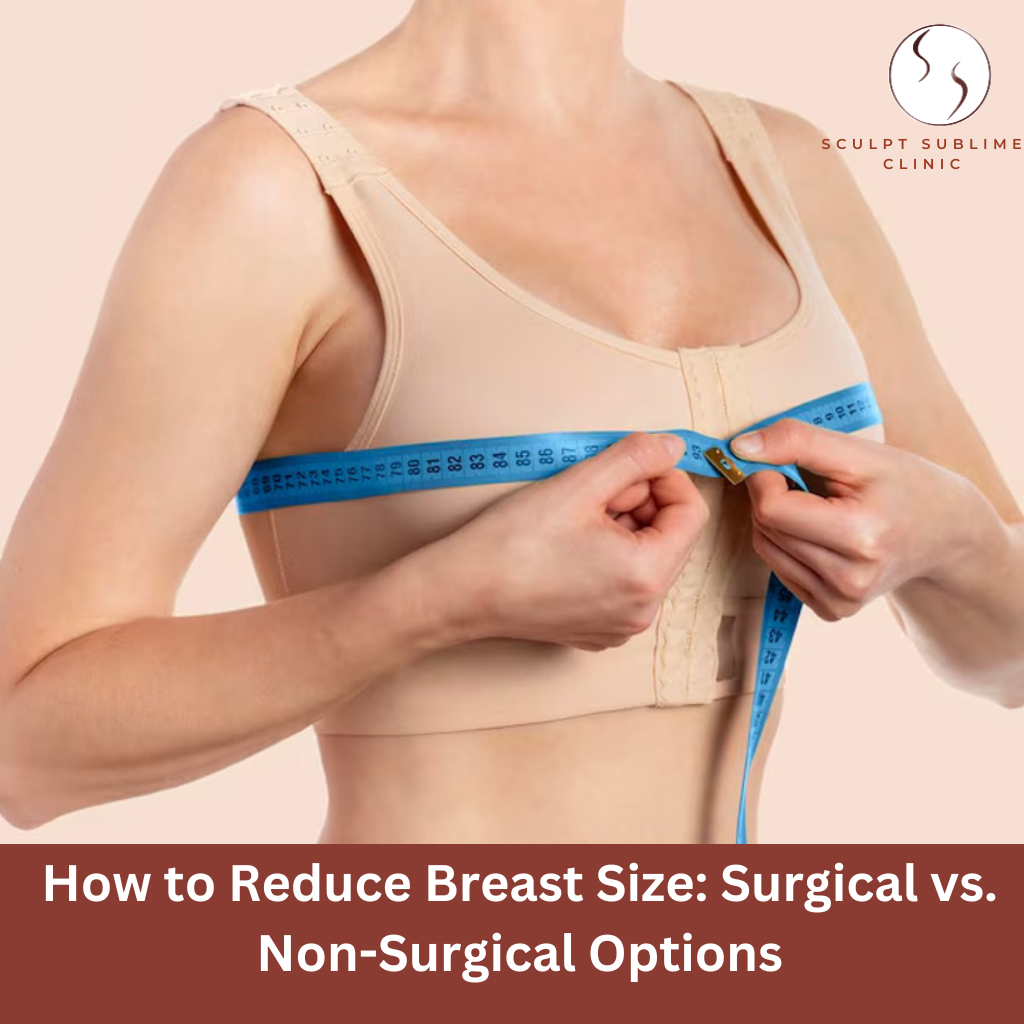July 4, 2025
Table of Contents
Large breasts may seem like a beauty ideal for some, but for many women, they can lead to daily discomfort. From chronic back and neck pain to restricted movement and self-consciousness, the physical and emotional toll can be significant. Fortunately, there are several effective ways to reduce breast size. These range from lifestyle adjustments to advanced surgical procedures. In this blog, we’ll break down the most common options and what you should know before choosing the right path for you.
Why Women Seek Breast Reduction
Breast reduction is not just a cosmetic choice. Many women experience real health concerns due to excessively large breasts. Common issues include:
- Persistent neck, back, and shoulder pain
- Skin irritation under the breast fold
- Difficulty finding properly fitting clothes
- Limited ability to participate in physical activity
- Emotional distress or lowered self-esteem
When these symptoms begin to affect daily life, many women explore breast reduction for relief and improved quality of life.
Surgical Option: Breast Reduction Surgery (Reduction Mammaplasty)
Surgical breast reduction, known medically as reduction mammaplasty, is a well-established and highly effective solution for significantly reducing breast size.
What It Involves
The procedure removes excess breast tissue, fat, and skin while reshaping the breast and repositioning the nipple to create a more proportional appearance. Several surgical techniques exist, including:
- Anchor or inverted-T method for larger reductions and cases with significant sagging
- Vertical or “lollipop” method for moderate reductions with less scarring
Who Is a Good Candidate?
According to the American Society of Plastic Surgeons and IAAPS, ideal candidates for surgical reduction typically:
- Experience physical discomfort due to breast size
- Have realistic expectations
- Do not smoke
- Are not planning major weight changes or pregnancy soon
This procedure is often recommended when the breasts are largely composed of glandular tissue rather than just fat.
Benefits of Surgery
- Relief from physical pain
- Improved posture and ability to exercise
- Increased confidence and body image
- High rates of patient satisfaction
Things to Keep in Mind
Like any surgery, breast reduction comes with potential risks, such as:
- Scarring around the areola and beneath the breast
- Temporary or permanent changes in nipple sensation
- Possible difficulties with breastfeeding in the future
- General surgical risks like infection or delayed healing
Recovery usually takes a few weeks, and most patients can return to light activities in about two weeks, although strenuous exercise should be avoided for longer.
Learn more about the 10 Most Popular Reasons Why Women Get Breast Implants to understand motivations behind breast surgeries.
Non-Surgical Alternatives
Non-surgical options may not offer the same dramatic results, but they can still provide some level of improvement, especially for those not ready or eligible for surgery.
1. Liposuction-Only Reduction
In cases where breast size is mostly due to fat and not glandular tissue, liposuction can be a less invasive option. It involves small incisions and a quicker recovery. However, this method may not lift the breast or address sagging, and it is less effective for women with dense breast tissue.
2. Weight Management and Exercise
A healthy lifestyle that includes regular cardio and strength training may help reduce overall body fat, which can lead to a slight reduction in breast size. However, breast tissue contains both fat and glands, and exercise alone may not achieve significant changes.
3. Supportive Measures
Wearing a well-fitted bra or a specially designed sports bra can help alleviate discomfort by improving posture and support. Physical therapy may also relieve pain caused by poor alignment or muscle strain.
4. Non-Invasive Fat Reduction Treatments
Treatments like CoolSculpting or laser lipolysis are sometimes marketed for fat reduction, but they are not approved for breast tissue and may be more suitable for other parts of the body. Their effectiveness in reducing breast size is limited and inconsistent.
Final Thoughts
Breast size reduction is a personal decision, and the right choice depends on your symptoms, body composition, goals, and lifestyle. Surgical reduction remains the most effective and long-lasting solution for women with significant discomfort and symptoms. Liposuction offers a middle ground for select candidates, while lifestyle and supportive measures can provide relief for mild to moderate concerns.
Always consult a board-certified plastic surgeon to discuss your needs and the best treatment for your unique case. A personalized consultation can help you weigh your options, understand potential outcomes, and make an informed choice that prioritizes your health and well-being.
Frequently Asked Questions
What is the most effective way to reduce breast size permanently?
Surgical breast reduction (reduction mammaplasty) is the most effective and long-lasting method. It removes excess tissue, fat, and skin, reshaping the breasts for both comfort and aesthetics.
How long does it take to recover from breast reduction surgery?
Most women can return to light activities within 2 weeks, but full recovery and return to strenuous exercise may take 4–6 weeks.
Will insurance cover breast reduction surgery?
In some cases, yes. If large breasts cause medical problems like chronic pain, rashes, or posture issues, insurance may cover part or all of the surgery costs.
What are the main risks of breast reduction surgery?
Risks include scarring, changes in nipple sensation, possible difficulties with breastfeeding, and general surgical risks like infection or delayed healing. Most patients, however, report high satisfaction with their results.


